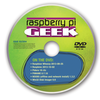Emulating game console classics on the Raspberry Pi
Twenty-five years ago, playing a video game meant attaching a small box to the family television in the living room. This box was either a game console or a small home computer. For control, you used a joystick or a gamepad. Now you can do all of these things using the corresponding SD card images on the Raspberry Pi.
PiMAME
A favorite image for Raspberry Pi retro gamers is PiMAME [1]. PiMAME is a Raspbian-based Raspberry Pi distro preconfigured with emulators for a number of the most popular retro gaming platforms. (See the box titled "PiMAME Emulators" for a list of the emulators supported by PiMAME.) Although you could theoretically set these emulators up on Raspbian – or almost any other Linux distribution – PiMAME saves you several configuration steps and even displays the emulators in a menu for easy access.
After bootup, the emulators appear in a small text menu, which you can navigate using the cursor keys (Figure 1). If you are playing on a TV with an HDMI connection, you should have no problems with the display of the text menu. However, many retro fans prefer to play '80s and '90s era console games on old CRT televisions. Thanks to the RCA video and audio analog outputs present on the Pi, it is possible to connect to an old system [2].
[...]
Buy this article as PDF
Pages: 4
(incl. VAT)






